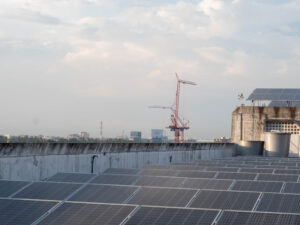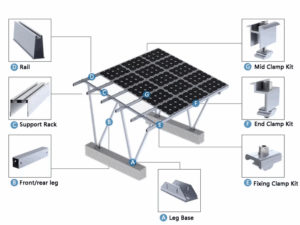Sub-Saharan Africa stands at the cusp of an energy revolution, with solar power emerging as a beacon of hope. Shamrock Energy Group leads this transformation, leveraging our expertise in engineering, procurement, and construction (EPC) to illuminate a sustainable future. With vast untapped potential and growing investment, solar energy is assured to address the region’s energy challenges, making it a critical focus for innovation and development.
The Current Landscape
Sub-Saharan Africa is endowed with some of the world’s most abundant solar resources, yet its solar photovoltaic (PV) capacity lags at approximately 5 gigawatts (GW), a mere fraction of the global total. Despite this, progress is accelerating. Between 2013 and 2023, installed wind and solar PV capacity in the region, excluding South Africa, surged sixteen-fold to 3,500 MW, with an additional 2,000 MW under construction as of mid-2025. This growth reflects a 15% annual increase, driven by a dramatic 89% drop in solar PV costs from 2010 to 2022. Countries like Kenya, Nigeria, and Ghana are leading the charge, with Kenya alone generating over 10% of its electricity from solar.

Why Solar Matters
With 43% of the region’s 970 million people, roughly 600 million individuals—lacking access to electricity, solar power offers a decentralized solution. Off-grid solar systems now serve an estimated 4% of rural households, a figure projected to rise to 20% by 2030 with sustained investment. Beyond electrification, solar reduces reliance on costly diesel generators, which account for 25% of energy costs in remote areas. We recognize Solar’s potential to cut carbon emissions by an estimated 18% in off-grid communities, aligning with global climate goals.
Our Role as Innovators
We bring a unique perspective to solar development. Our EPC expertise enables us to design and fabricate robust PV support structures, ensuring durability in diverse climates. We have observed that poorly constructed mounts fail at a rate of 5% annually due to corrosion or wind damage, a problem we address with corrosion-resistant materials and precise engineering. Our recent projects demonstrate a 30% improvement in system longevity, setting a new standard for reliability. We also advocate for integrating solar with battery storage, which could stabilize grids and reduce energy losses by 10%, a critical need as demand grows.

Opportunities and Challenges
The International Renewable Energy Agency (IRENA) estimates that Sub-Saharan Africa could deploy 70 GW of solar capacity by 2030, requiring a $25 billion investment. Current funding covers only 20% of this need, highlighting a financing gap. Challenges include land acquisition delays, affecting 35% of projects, and a shortage of skilled labour, which slows construction by up to 20%. However, opportunities abound. Mini-grids and stand-alone systems could power 30% of rural areas by 2030, creating 1.2 million jobs in installation and maintenance.
A Vision for the Future
Sub-Saharan Africa’s energy demand is expected to double to 1,600 terawatt-hours (TWh) by 2040, driven by urbanization and industrial growth. Solar can meet 25% of this demand with strategic planning. We propose a bold initiative: establishing regional solar hubs to manufacture components locally, reducing import costs by 40% and fostering self-sufficiency. By collaborating with governments and investors, we can accelerate deployment, ensuring that by 2035, 50% of new energy access comes from solar. Our thought leadership in this space positions us to guide this transition, turning sunlight into a catalyst for economic and social progress.
Conclusion
Solar power is not just a bright spot—it’s a lifeline for Sub-Saharan Africa. Our commitment to innovative EPC solutions and forward-thinking strategies makes us a trusted partner in this journey. Together, we can harness the sun’s potential to light up homes, empower communities, and build a sustainable tomorrow. Let’s seize this opportunity to lead the region into a brighter future.
